Fortinet Achieves Prestigious Recognition for Zero Trust Network Access (ZTNA)
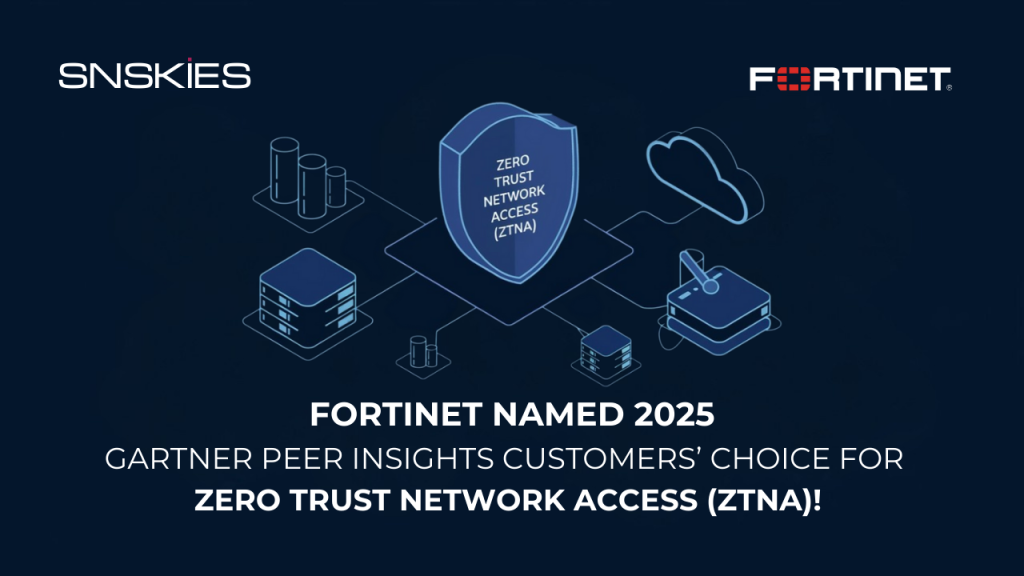
Articles Unlocking Modern Cybersecurity in the UAE, Middle East, and Dubai: A Deep Dive into IAM, PAM, and NAC Articles Unlocking Modern Cybersecurity in the UAE, Middle East, and Dubai: A Deep Dive into IAM, PAM, and NAC Articles February 25, 2025 Fortinet Achieves Prestigious Recognition for Zero Trust Network Access (ZTNA) Fortinet has been honored as the only vendor recognized as a 2025 Gartner Peer Insights Customers’ Choice for Zero Trust Network Access (ZTNA). This distinction highlights Fortinet’s industry-leading security solutions and commitment to customer satisfaction. Leading the Industry with Unmatched Security Solutions Fortinet Universal ZTNA provides secure, seamless access to private, SaaS, and web applications, ensuring that organizations can implement a zero-trust security model effectively. With a focus on continuous security posture validation, simplified management, and scalable deployment, Fortinet remains at the forefront of ZTNA innovation. Key Advantages of Fortinet Universal ZTNA 1. Seamless Security for Remote and On-Premises Users Fortinet’s Universal ZTNA ensures consistent security enforcement for all users, whether working remotely or within corporate networks. By applying a unified security policy, organizations can protect sensitive data and applications from unauthorized access. 2. Continuous Posture Validation for Enhanced Security Fortinet ZTNA incorporates real-time device and user posture validation, ensuring that only compliant devices are granted access. Advanced security checks, including domain verification and antivirus validation, help organizations maintain a robust security posture. 3. Seamless Integration with the Fortinet Security Fabric Fortinet Universal ZTNA integrates effortlessly with FortiGate, FortiAuthenticator, and FortiToken, providing a platform-based approach to zero-trust security. This integration streamlines security management and enhances protection across an organization’s entire IT infrastructure. 4. User-Friendly Experience and Fast Adoption Designed with ease of use in mind, Fortinet ZTNA offers a centralized management dashboard, automated security enforcement, and seamless deployment. These features enable businesses to adopt zero-trust principles quickly while minimizing disruptions to operations. SNSKIES – A Trusted Business Partner Fortinet collaborates with SNSKIES, a strategic business partner, to provide organizations with cutting-edge cybersecurity solutions. With expertise in cloud security, network infrastructure, and digital transformation, SNSKIES ensures seamless deployment and expert support for Fortinet’s Universal ZTNA. By partnering with SNSKIES, businesses gain access to tailored security strategies, reinforcing zero-trust adoption while enhancing protection against evolving cyber threats. Strengthening Cybersecurity with Fortinet ZTNA The 2025 Gartner Peer Insights Customers’ Choice recognition underscores Fortinet’s dedication to delivering best-in-class security solutions. With a focus on continuous innovation, seamless integration, and superior security capabilities, Fortinet continues to set the benchmark for Zero Trust Network Access solutions. Recent Post All Posts Articles Fortinet Named 2025 Gartner Peer Insights Customers’ Choice for ZTNA March 6, 2025/ Accelerate Threat Detection and Response with a Unified Security Operations Platform February 26, 2025/ Unlocking Modern Cybersecurity in the UAE, Middle East, and Dubai: A Deep Dive into IAM, PAM, and NAC February 25, 2025/ Older Posts
Accelerate Threat Detection and Response with a Unified Security Operations Platform
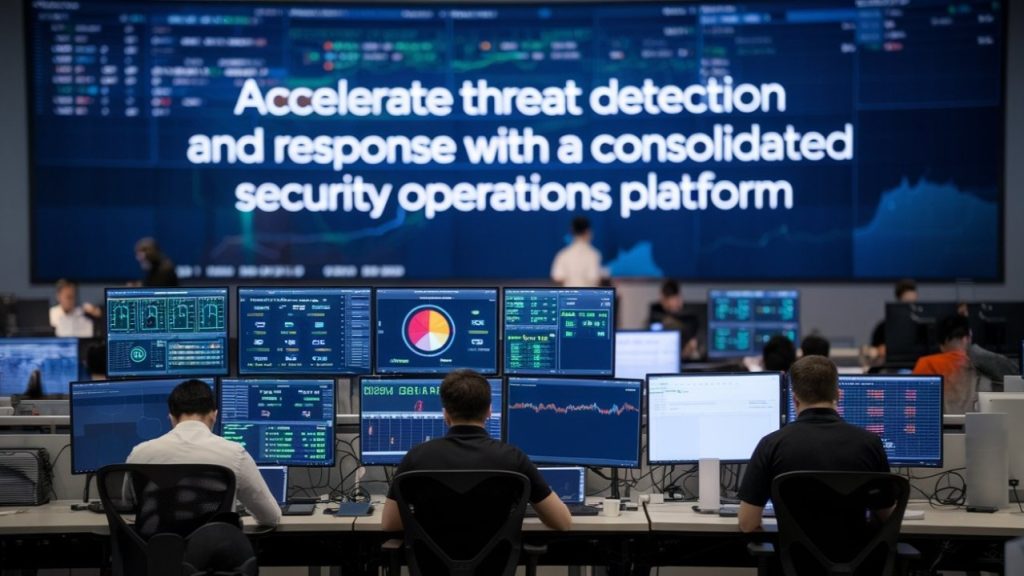
Articles Managed Security Services in the Middle East | Enhancing Cyber Resilience Articles Managed Security Services in the Middle East | Enhancing Cyber Resilience Articles February 19, 2025 The Need for a Unified Security Operations Platform In today’s dynamic cybersecurity landscape, rapid threat detection and response are critical to safeguarding organizational assets. A unified security operations platform integrates key security technologies—including SOC Analytics, SIEM, SOAR, EDR, XDR, NDR, and SOCaaS—into a single, efficient solution. This consolidation enhances response times, reduces complexity, and fortifies an organization’s security posture against emerging threats. Challenges of Traditional Security Approaches Modern enterprises contend with vast security data streams and a high volume of alerts from disparate tools. Legacy security frameworks often result in: Alert Fatigue: An overwhelming number of alerts make it difficult to identify genuine threats. Inefficient Workflows: Isolated security solutions necessitate manual event correlation, slowing response times. Operational Complexity: Managing multiple security tools increases administrative overhead and resource demands. By unifying security operations, organizations can achieve real-time threat visibility, streamlined incident management, and improved overall efficiency. Key Components of a Modern Security Operations Platform SOC Analytics SOC Analytics leverages artificial intelligence and machine learning to process security data, detect anomalies, and generate actionable insights. This proactive approach enhances threat prioritization and accelerates incident response. SIEM (Security Information and Event Management) SIEM systems centralize log data, correlate security events, and provide real-time monitoring. By offering advanced threat detection and compliance reporting, SIEM ensures organizations can swiftly identify and mitigate cyber risks. SOAR (Security Orchestration, Automation, and Response) SOAR solutions automate security workflows, integrate with SIEM, and enhance incident response efficiency. Automating alert triage, investigation, and remediation reduces response times and optimizes resource utilization. EDR (Endpoint Detection and Response) EDR continuously monitors endpoints—including servers, workstations, and mobile devices—for suspicious activity. With behavioral analysis and automated containment capabilities, EDR mitigates endpoint threats before they escalate. XDR (Extended Detection and Response) XDR extends detection beyond endpoints, integrating security data from networks, cloud environments, and applications. This holistic approach enables more accurate threat correlation and faster, coordinated responses. NDR (Network Detection and Response) NDR analyzes network traffic to detect anomalies, lateral movement, and data exfiltration attempts. Behavioral analytics ensure that threats bypassing traditional endpoint defenses are swiftly identified and mitigated. SOCaaS (Security Operations Center as a Service) SOCaaS provides 24/7 security monitoring and incident response through managed service providers. This scalable model ensures comprehensive threat protection without the need for extensive in-house security investments. Benefits of a Unified Security Operations Platform Accelerated Threat Detection and Response Integrating SIEM, SOAR, EDR, XDR, and NDR within a single platform enables real-time security event monitoring and automated response. This consolidation reduces the time required to detect and neutralize threats, minimizing potential damage. Reduced Alert Fatigue and Improved Efficiency Automated alert correlation and intelligent prioritization help security teams focus on high-impact threats. This reduces noise from false positives, allowing analysts to allocate resources effectively. Comprehensive Threat Visibility A unified platform consolidates security data, offering deep insights into the entire threat landscape. Contextualized information—including asset criticality and threat intelligence—supports informed decision-making and strategic risk management. Cost Efficiency and Scalability By eliminating the need for multiple standalone tools, organizations reduce operational costs and administrative complexity. A scalable security model ensures adaptability to evolving threats and increasing data volumes without significant capital expenditure. Streamlined Operations and Centralized Management A single security dashboard simplifies incident monitoring, response coordination, and compliance reporting. Customizable automation playbooks enhance efficiency while maintaining expert oversight. Conclusion A unified security operations platform is essential for organizations aiming to enhance threat detection and response in an increasingly sophisticated cyber threat landscape. By integrating SOC Analytics, SIEM, SOAR, EDR, XDR, NDR, and SOCaaS into a seamless security solution, businesses can improve operational efficiency, reduce alert fatigue, and strengthen their cybersecurity defenses. Invest in a comprehensive security operations platform today to optimize your security strategy. Contact our cybersecurity specialists for a personalized demo and discover how to fortify your organization against evolving threats. Recent Post All Posts Articles Empowering Network Security in the Middle East: Strategies for a Resilient Future February 24, 2025/ Managed Security Services in the Middle East | Enhancing Cyber Resilience February 19, 2025/ Network Security Provider: Securing the Digital Future in the Middle East February 13, 2025/ Older Posts
Unlocking Modern Cybersecurity in the UAE, Middle East, and Dubai: A Deep Dive into IAM, PAM, and NAC

Articles Fully Managed SOC as a Service – Smart Cybersecurity for U.S. Businesses by SNSKIES Articles Fully Managed SOC as a Service – Smart Cybersecurity for U.S. Businesses by SNSKIES Articles July 16, 2025 In a fast-paced digital world, protecting a company’s data is more vital than ever, particularly in dynamic markets like the UAE and the broader Middle East. Identity and Access Management (IAM), Privileged Access Management (PAM), and Network Access Control (NAC) are fundamental cybersecurity components that, when integrated, create a sophisticated defense framework. This article explores these essential security measures, their differences, and their significance for businesses operating in these regions. What Is Identity and Access Management (IAM)? IAM is a cornerstone of modern cybersecurity, ensuring that the right people securely access the right resources. In the Middle East, where digital transformation is accelerating, IAM is essential for organizations looking to manage access efficiently while safeguarding sensitive data. IAM solutions enable businesses to: Manage User Identities: Enhance efficiency and security in onboarding and offboarding processes. Control Access: Implement secure authentication methods like Multi-Factor Authentication (MFA) and Single Sign-On (SSO) to comply with local and international standards. Enforce Policies: Continuously review and adjust permissions to maintain compliance with cybersecurity regulations and best practices. The Four Pillars of IAM in a Digital Economy A robust IAM strategy is built on four critical pillars, particularly relevant in rapidly digitizing economies: Identity Governance and Administration (IGA): Manages user identities and ensures compliance through regular access reviews, an essential practice in regions with strict data protection laws. Access Management: Oversees authentication and authorization processes, ensuring only approved users access sensitive systems. Privileged Access Management (PAM): Secures high-risk accounts with elevated permissions to mitigate insider threats and prevent breaches. Directory Services Management: Maintains secure directory services, centralizing identity data—crucial for organizations embracing digital transformation. Privileged Access Management (PAM): A Critical Layer of Protection PAM focuses on securing privileged accounts, which, if compromised, can lead to significant security breaches. In financial and governmental sectors, where security is paramount, PAM strategies include: Credential Vaulting: Secure storage of privileged credentials to prevent unauthorized access. Session Auditing: Monitoring and auditing privileged sessions to detect anomalies and mitigate insider threats. Just-In-Time Access: Granting temporary privileges only when needed to reduce security exposure. Implementing strict controls around privileged access helps businesses reduce their attack surface and protect mission-critical assets. PAM vs. NAC: Ensuring Network Security While PAM secures privileged accounts, Network Access Control (NAC) regulates device access to network resources. NAC ensures that only authenticated and compliant devices can connect, providing an additional layer of protection against cyber threats. The integration of PAM and NAC offers: Advanced Security: A multi-layered approach that monitors both user and device behavior for comprehensive protection. Improved Compliance: Strict access controls and continuous monitoring ensure adherence to cybersecurity regulations. Operational Efficiency: Centralized policies streamline IT management and security enforcement. The Strength of IAM, PAM, and NAC Integration Integrating IAM, PAM, and NAC strengthens overall security by addressing multiple threat vectors. In highly digitalized business environments, this unified strategy enables: Automated Security Processes: Reducing manual errors and allowing for rapid incident response. Regulatory Compliance: Providing comprehensive oversight of user and network activities. Proactive Risk Mitigation: Detecting and neutralizing threats before they escalate. This cohesive approach not only fortifies security defenses but also streamlines compliance, making cybersecurity management more effective. Conclusion: Shaping a Resilient Digital Future With cyber threats constantly evolving, businesses must adopt a proactive and integrated approach to access management. By leveraging IAM, PAM, and NAC, organizations can ensure robust identity protection, secure privileged accounts, and maintain controlled network access. These strategies enhance security, improve operational efficiency, and create a resilient digital environment for businesses worldwide. Recent Post All Posts Articles Ultimate Guide to SOCaaS Providers in 2025: Why SNSKIES is Transforming Global Cybersecurity July 23, 2025/ Top SOC as a Service Providers – Boosting Global Cybersecurity with SNSKIES July 21, 2025/ Fully Managed SOC as a Service – Smart Cybersecurity for U.S. Businesses by SNSKIES July 16, 2025/ Older Posts
Empowering Network Security in the Middle East: Strategies for a Resilient Future

Articles Managed Security Services in the Middle East | Enhancing Cyber Resilience Articles Managed Security Services in the Middle East | Enhancing Cyber Resilience Articles February 19, 2025 As digital transformation sweeps across the Middle East, robust network security is more than a technical requirement—it’s a strategic imperative. Businesses, governments, and service providers must adopt advanced cybersecurity measures to counter emerging threats while fostering innovation. This article delves into comprehensive network security strategies and next-generation solutions tailored for the Middle Eastern market. 1. The Digital Transformation Challenge in the Middle East Rapid Digitalization and Cyber Risks Growing Connectivity: With increased reliance on cloud computing, IoT devices, and remote work, digital infrastructures are expanding rapidly. Emerging Threats: Cyberattacks are evolving in sophistication, targeting critical assets and sensitive data. Regional Impact: For Middle Eastern organizations, protecting economic and technological assets is paramount to sustaining growth and trust. 2. Virtual and Cloud-Native Solutions Virtual NGFW: Flexibility & Scalability: Ideal for virtualized environments, offering the same level of protection as physical devices without the hardware constraints. Cloud-Native Firewall: Optimized for the Cloud: Seamlessly integrates with cloud services, ensuring continuous protection as organizations migrate to digital platforms. Dynamic Threat Response: Leverages real-time analytics and machine learning to adapt to evolving cyber risks. 3. Harnessing AI-Powered Security 3.1 Intelligent Threat Detection and Response AI-Powered Security: Machine Learning Integration: Utilizes advanced algorithms to detect anomalies and predict potential threats. Proactive Monitoring: Continuously learns from network traffic, enhancing detection accuracy over time. Intrusion Prevention System (IPS): Real-Time Intervention: Monitors and blocks suspicious activities before they escalate into breaches. Inline Malware Prevention: Deep Inspection: Analyzes data packets on the fly to identify and neutralize malware before it infiltrates the network. 4. Advanced Filtering and Detection Mechanisms 4.1 Content and Domain Filtering URL Filtering: Preventive Control: Blocks access to malicious websites and phishing attempts, ensuring users stay within safe browsing environments. DNS Filtering: Layered Defense: Stops threats at the DNS level by preventing connections to known harmful domains. 4.2 Attack Surface and IoT Security Attack Surface Security Rating: Comprehensive Analysis: Evaluates the exposure level of an organization’s digital assets, guiding strategic improvements. IoT Detection: Device Management: Identifies and monitors IoT devices, reducing vulnerabilities that could be exploited by cyber attackers. 5. Centralized Management for Enhanced Operational Efficiency 5.1 NOC and Centralized Oversight NOC Management: 24/7 Monitoring: A dedicated Network Operations Center (NOC) ensures real-time visibility and rapid response to incidents. Central Management: Unified Dashboard: Streamlines the administration of diverse security tools, providing a holistic view of network health. 5.2 Leveraging Generative AI and Managed Services Generative AI for NOC: Automated Insights: Uses AI to generate actionable intelligence, predict potential issues, and optimize response strategies. Managed Service & Firewall Migration Service: Expert Oversight: Outsource network security operations to specialized providers for round-the-clock monitoring, ensuring smooth transitions during firewall upgrades or migrations. Cost Efficiency: Reduces overhead by consolidating expertise and resources while maintaining high security standards. Recent Post All Posts Articles Empowering Network Security in the Middle East: Strategies for a Resilient Future February 24, 2025/ Managed Security Services in the Middle East | Enhancing Cyber Resilience February 19, 2025/ Network Security Provider: Securing the Digital Future in the Middle East February 13, 2025/ Older Posts
Managed Security Services in the Middle East | Enhancing Cyber Resilience
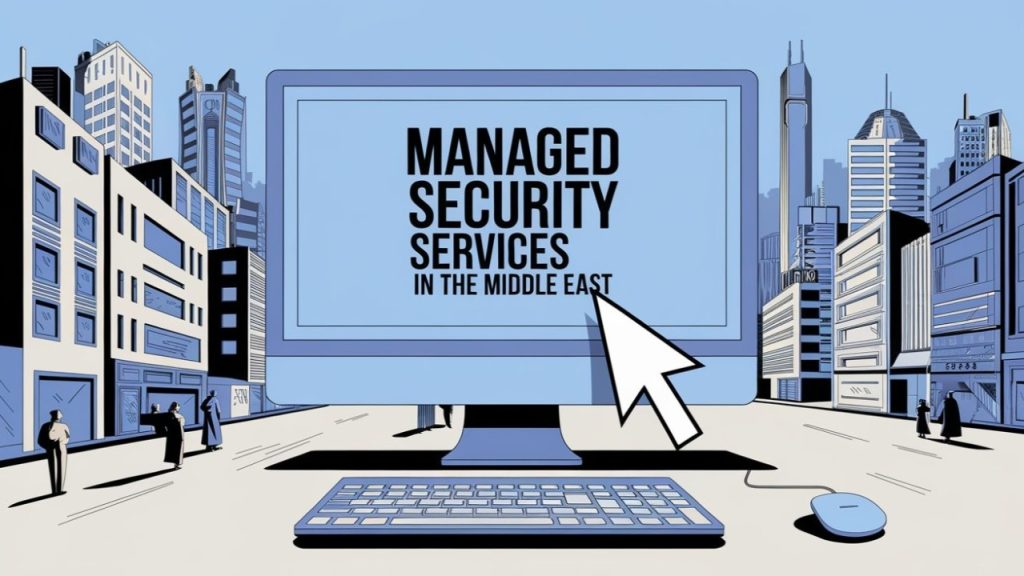
Articles Cyber Security Solutions: Comprehensive Protection for the Middle East Articles Cyber Security Solutions: Comprehensive Protection for the Middle East Articles February 12, 2025 In today’s fast-evolving digital landscape, businesses in the Middle East face increasing cyber security threats that demand robust, agile, and comprehensive security measures. Managed Security Services (MSS) have emerged as a key solution, empowering organizations to protect critical infrastructure, safeguard sensitive data, and ensure compliance with regional regulatory standards. Why Managed Security Services are Essential The rapid digital transformation in the Middle East has led to a surge in sophisticated cyberattacks. Traditional security measures are no longer sufficient. Managed security services providers offer a proactive, round-the-clock approach, delivering: 24/7 Network Monitoring: Continuous surveillance to detect and mitigate threats in real time. Advanced Threat Intelligence: Leveraging AI and machine learning to anticipate and neutralize emerging risks. Compliance Management: Helping organizations adhere to local regulations such as SAMA, NESA, and DFSA, ensuring business continuity and customer trust. Key Trends in Middle East Cybersecurity Organizations across the region are shifting towards Zero Trust Architectures and integrated cybersecurity solutions. This trend is driven by the need to protect diverse environments—including cloud, IoT, and on-premises networks—against a backdrop of evolving cyber threats. Providers are focusing on: Integration of AI-Powered Analytics: Enhancing detection and response times. Specialized Services for Critical Infrastructure: Tailoring solutions for industries such as oil & gas, finance, and government. Outsourced Expertise: Addressing the regional cybersecurity talent shortage by partnering with experienced MSSPs. Benefits of Managed Security Services in the Middle East Adopting MSS can transform an organization’s cybersecurity posture by offering: Cost Efficiency: Outsourcing security functions reduces the need for large in-house teams and expensive technology investments. Expertise and Experience: MSS providers bring specialized knowledge and industry best practices, ensuring robust protection. Scalability: As organizations grow, MSS solutions can easily scale to meet increasing demands and evolving threat landscapes. Enhanced Focus on Core Business: With cybersecurity handled by experts, companies can concentrate on strategic growth and innovation. Challenges and Considerations While the benefits are compelling, organizations must consider several factors when selecting a managed security service provider: Customization: Ensure the provider can tailor solutions to your specific industry and operational needs. Regulatory Compliance: Verify that the MSS aligns with regional and international cybersecurity standards. Integration with Existing Systems: Seamless integration with current IT and OT environments is critical to avoid operational disruptions. Future Outlook for MSS in the Middle East The Middle East cybersecurity market is poised for significant growth. With increasing investments in digital transformation and heightened awareness of cyber risks, more organizations are expected to adopt MSS solutions. Continuous innovation, particularly in areas such as cloud security and zero trust networking, will further drive the evolution of managed security services, ensuring that businesses remain one step ahead of cyber threats. Conclusion Managed Security Services are not just an option—they are a necessity for organizations in the Middle East aiming to secure their digital infrastructure. By leveraging expert MSS providers, businesses can achieve enhanced protection, regulatory compliance, and operational resilience in an increasingly complex cyber environment. Embracing these services today is a strategic move toward a secure and sustainable digital future.anasecy Recent Post All Posts Articles Blog News Managed Security Services in the Middle East | Enhancing Cyber Resilience February 19, 2025/ Network Security Provider: Securing the Digital Future in the Middle East February 13, 2025/ Cyber Security Solutions: Comprehensive Protection for the Middle East February 12, 2025/ Older Posts
Network Security Provider: Securing the Digital Future in the Middle East

Articles Network Security Dubai, UAE | SNSKIES FZ LLC Articles Network Security Dubai, UAE | SNSKIES FZ LLC Articles February 10, 2025 In an era of rapidly evolving cyber threats, organizations across the Middle East are recognizing the need for robust network security solutions. As a trusted network security provider, implementing comprehensive cybersecurity strategies is essential to safeguard critical assets and maintain operational continuity. Future-Proof Your Infrastructure Security A resilient and proactive approach to network security is the key to preventing breaches and mitigating risks. Organizations in the Middle East can enhance their security posture through: Accelerated Patch Management: Deploy real-time monitoring systems that enable immediate patching of vulnerabilities, minimizing the window of exposure to potential attacks. AI-Driven Defense: Leverage advanced artificial intelligence tools that detect threats at lightning speed and automate response measures, ensuring even sophisticated attacks are neutralized promptly. Strengthened Supply Chain Security: Enforce rigorous supplier vetting processes and robust risk management practices to secure every link in the supply chain. Enhanced Regional Collaboration: Foster real-time intelligence sharing among local industries and government bodies to build a united front against cyber threats. Strategic Recommendations for Cybersecurity Achieving comprehensive cybersecurity requires a multi-layered approach. Consider the following strategies to stay ahead of cybercriminals: 1. Implementing a Zero Trust Architecture A zero trust security model ensures that no user or device is automatically trusted—every access request must be verified. Key components include: Micro-Segmentation: Divide your network into isolated segments to contain breaches and prevent lateral movement. Multi-Factor Authentication (MFA): Incorporate layered verification methods to strengthen access points. Least-Privilege Access: Limit user permissions strictly to what is necessary, reducing the potential impact of any compromised credentials. 2. Leveraging AI-Driven Threat Detection and Response Modern cyber threats require equally modern solutions: Continuous Monitoring: Use AI-based tools to monitor network activity and detect anomalies in real time. Rapid Response: Automate incident response processes to quickly neutralize threats and reduce downtime. 3. Adhering to Regulatory Compliance and Cybersecurity Standards Compliance is not just about meeting legal requirements—it builds trust and enhances resilience: Regularly update your security policies to reflect both local regulations and international best practices. Implement a framework that meets or exceeds established cybersecurity standards. 4. Bridging the Cybersecurity Skills Gap Technology is only as strong as the team that manages it: Invest in ongoing training and certification programs for your cybersecurity professionals. Develop internal expertise to ensure your security measures are up to date and effective. 5. Utilizing Managed Security Services and Cyber Insurance To complement in-house capabilities: Consider partnering with managed security service providers (MSSPs) who offer specialized expertise and around-the-clock monitoring. Explore cyber insurance options to provide financial protection in case of an incident. Embracing a Holistic Security Program Effective network security goes beyond technology—it involves a comprehensive strategy that integrates systems, processes, policies, and people. A holistic approach includes: Technology Integration: Adopt and maintain advanced security tools that are updated with the latest threat intelligence. Process Optimization: Develop clear procedures and response plans that are regularly reviewed and refined. Policy Enforcement: Establish strict security policies that govern every aspect of network usage and data management. People Development: Cultivate a culture of security awareness through continuous training and education initiatives. Conclusion For organizations in the Middle East, a proactive and strategic approach to network security is not just beneficial—it’s essential. By accelerating patch management, investing in AI-driven defenses, strengthening supply chain security, and fostering regional collaboration, enterprises can build a robust cybersecurity framework. These measures, combined with zero trust architectures and comprehensive training programs, ensure that digital infrastructures are prepared for today’s threats and tomorrow’s challenges. Recent Post All Posts Articles Blog News Cyber Security Solutions: Comprehensive Protection for the Middle East February 12, 2025/ Network Security Services in Dubai, UAE – Protecting Your Digital Future February 11, 2025/ Network Security Dubai, UAE | SNSKIES FZ LLC February 10, 2025/ Older Posts
Cyber Security Solutions: Comprehensive Protection for the Middle East
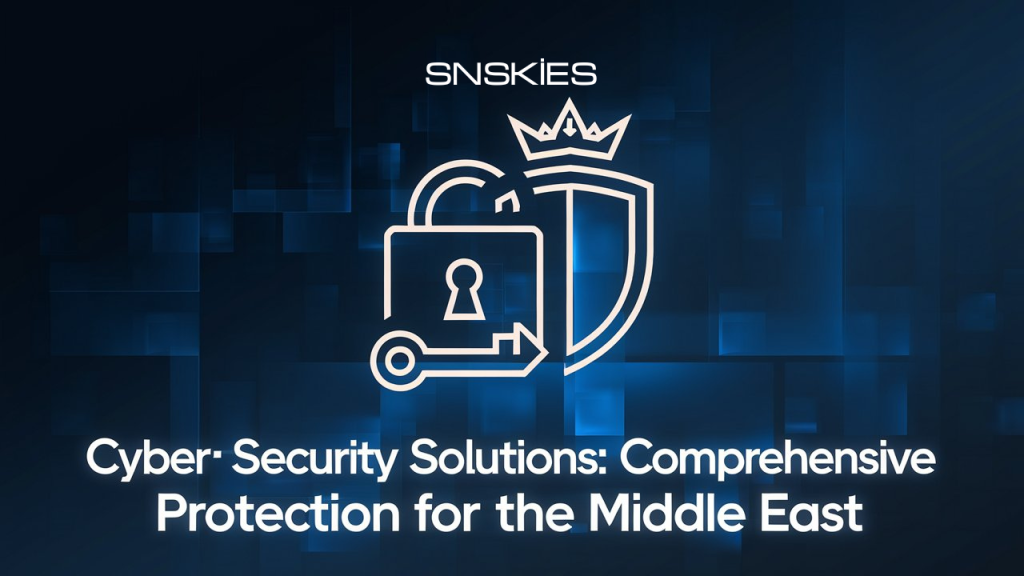
Articles Fully Managed SOC as a Service – Smart Cybersecurity for U.S. Businesses by SNSKIES Articles Fully Managed SOC as a Service – Smart Cybersecurity for U.S. Businesses by SNSKIES Articles July 16, 2025 In today’s fast-evolving digital landscape, businesses in Dubai, UAE, and across the Middle East face an increasing wave of cyber threats. As cyberattacks grow in sophistication and frequency, organizations must implement robust cybersecurity solutions to safeguard their critical assets. A strategic, end-to-end approach to network security is essential for mitigating risks and ensuring business continuity. The Cybersecurity Landscape in the Middle East The rapid digital transformation in the Middle East has made businesses prime targets for cybercriminals. While many organizations invest in advanced security measures, evolving attack strategies require more than just layered defenses. Companies must adopt dynamic cybersecurity strategies that combine cutting-edge technology with human expertise to address emerging threats effectively. Key Cyber Security Solutions for Dubai & the Middle East For businesses seeking cybersecurity services in Dubai, a holistic approach is crucial. Effective security strategies should include: Proactive Threat Management: Continuous monitoring and real-time threat detection to prevent cyberattacks before they cause damage. Comprehensive Risk Assessments: Regular security audits and risk evaluations to identify vulnerabilities and strengthen defenses. Regulatory Compliance & Resilience: Ensuring adherence to local and international cybersecurity regulations while maintaining business continuity. By integrating these critical components, organizations can protect sensitive data, minimize financial losses, and maintain seamless operations in today’s digital world. Advanced Cyber Security with a Human Touch Modern cybersecurity solutions combine AI-powered threat intelligence with expert-led risk management to deliver unparalleled protection. Businesses in Dubai and the Middle East can benefit from security strategies that offer: Enhanced Data Protection: Utilizing next-gen firewalls, intrusion prevention systems (IPS), and data encryption to prevent unauthorized access. Adaptive Security Strategies: Implementing AI-driven solutions that evolve to counter emerging cyber threats. Client-Centric Cybersecurity Processes: Transparent, iterative security frameworks tailored to unique business needs. The SNSKIES Approach: A Holistic Cyber Security Framework SNSKIES FZ LLC is a leading cybersecurity provider in Dubai, offering a proven methodology for cyber resilience: Regulatory Compliance Services: Helping businesses align with GDPR, NESA, ISO 27001, and other cybersecurity standards. Security Audits & Risk Assessments: Identifying weaknesses and implementing effective cybersecurity strategies. Advanced Threat Management: Leveraging threat intelligence and SOC (Security Operations Center) services to detect and neutralize cyber threats proactively. This comprehensive cybersecurity framework ensures businesses remain secure, adaptable, and prepared for future cyber challenges. Why Cyber Security is Essential for Middle Eastern Businesses A strong cybersecurity posture is critical for business success in Dubai and beyond. Key benefits include: Protection of Sensitive Data: Safeguarding financial records, intellectual property, and customer information. Prevention of Financial Loss: Reducing the impact of ransomware attacks, data breaches, and cyber fraud. Operational Excellence: Maintaining smooth business operations without disruptions from cyber incidents. With digital transformation accelerating in the region, cybersecurity is no longer optional—it’s a necessity. Why Choose SNSKIES for Cyber Security Solutions in Dubai? For over 20 years, SNSKIES FZ LLC has been a trusted cybersecurity partner in Dubai and the Middle East. Their expertise and client-first approach ensure businesses receive: Extensive Industry Experience: Decades of success in providing enterprise-grade cybersecurity solutions. Expert Cybersecurity Team: Skilled professionals delivering customized security services for various industries. Tailored, Transparent Security Solutions: A bespoke cybersecurity strategy aligned with your business goals. By partnering with SNSKIES, businesses gain reliable, end-to-end protection against cyber threats. Future Trends in Cyber Security As cyber threats evolve, businesses must stay ahead by embracing emerging security technologies. Key trends include: AI & Machine Learning in Cybersecurity: Automating threat detection and response for faster, more efficient security operations. Zero Trust Security Models: Eliminating implicit trust and requiring continuous authentication for all users and devices. IoT Security Enhancements: Protecting connected devices as Internet of Things (IoT) adoption expands. Advanced Cloud Security Solutions: Strengthening defenses for hybrid and multi-cloud environments. Conclusion In today’s cyber-threat landscape, investing in robust cybersecurity solutions in Dubai is essential for protecting assets, ensuring compliance, and maintaining business continuity. By adopting a proactive security strategy, businesses can safeguard their digital infrastructure against current and future threats. Partner with SNSKIES FZ LLC to secure your business with advanced network security and cybersecurity solutions in Dubai and across the Middle East. Contact us today to enhance your digital security and ensure a resilient future. Recent Post All Posts Articles Blog News Ultimate Guide to SOCaaS Providers in 2025: Why SNSKIES is Transforming Global Cybersecurity July 23, 2025/ Top SOC as a Service Providers – Boosting Global Cybersecurity with SNSKIES July 21, 2025/ Fully Managed SOC as a Service – Smart Cybersecurity for U.S. Businesses by SNSKIES July 16, 2025/ Older Posts
Network Security Services in Dubai, UAE – Protecting Your Digital Future

Articles Understanding Cyber Security Resilience Services in UAE and the Middle East Articles Understanding Cyber Security Resilience Services in UAE and the Middle East Articles January 30, 2025 In today’s hyper-connected world, businesses in Dubai face a constant barrage of cyber threats. With a rapidly evolving digital landscape, robust network security isn’t just an option—it’s a necessity. This article explores the benefits, key offerings, and best practices for network security services in Dubai, helping your organization stay secure and compliant. What Are Network Security Services? Network security services refer to a suite of solutions designed to protect your digital infrastructure from unauthorized access, data breaches, and cyberattacks. These services include: Firewall Management: Monitoring and controlling incoming and outgoing network traffic. Intrusion Detection and Prevention: Identifying and stopping suspicious activities before they cause harm. Vulnerability Assessments and Penetration Testing: Regular audits that expose system weaknesses. Managed Security Services: Outsourcing security monitoring, incident response, and compliance management. Data Encryption and Access Control: Safeguarding sensitive data through advanced encryption techniques and strict access policies. Why Network Security Is Critical for Dubai Businesses Dubai is renowned for its dynamic business environment and rapid technological advancements. However, this progress comes with significant cybersecurity challenges: High-Value Targets: As a global business hub, Dubai attracts sophisticated cybercriminals targeting financial data, intellectual property, and customer information. Regulatory Compliance: Local and international regulations require businesses to maintain high standards of data protection and security. Business Continuity: Robust network security services minimize downtime and help maintain uninterrupted operations even when threats occur. Digital Transformation: As companies adopt cloud services and IoT devices, the need for comprehensive network security has never been greater. Key Network Security Services Offered in Dubai Leading providers in Dubai offer a variety of specialized services designed to meet the unique demands of the region. These include: 24/7 Security Monitoring: Continuous oversight ensures threats are detected and mitigated in real time. Advanced Threat Intelligence: Leveraging AI and machine learning to predict and counter emerging cyber threats. Penetration Testing: Simulated cyberattacks help identify vulnerabilities before hackers do. Incident Response and Recovery: Rapid response teams work to contain and remediate breaches, minimizing business impact. Cloud and Hybrid Network Security: Protecting data whether it resides on-premises, in the cloud, or across multiple environments. Benefits of Investing in Network Security Services Investing in high-quality network security services provides numerous advantages for businesses in Dubai: Enhanced Data Protection: Prevent unauthorized access and safeguard sensitive information. Reduced Operational Downtime: Minimize the risks of data breaches and system outages. Cost Savings: Proactive security measures reduce the potential financial losses associated with cyber incidents. Increased Customer Trust: Demonstrate a commitment to protecting customer data and ensuring privacy. Regulatory Compliance: Stay ahead of stringent data protection laws and industry standards. How to Choose the Right Network Security Provider in Dubai When selecting a network security service provider, consider these critical factors: Expertise and Experience: Look for providers with a proven track record in the local market and relevant industry certifications. Comprehensive Service Portfolio: Choose a partner that offers end-to-end security solutions tailored to your business needs. Customer Support: Ensure the provider offers round-the-clock support and rapid incident response. Technology and Innovation: Select a company that invests in the latest technologies, including AI-driven analytics and cloud security solutions. Client Testimonials and Case Studies: Review success stories and client feedback to gauge reliability and effectiveness. Future Trends in Network Security The cybersecurity landscape is continually evolving. Here are a few trends to watch: AI and Machine Learning: These technologies are increasingly used to automate threat detection and response. Zero Trust Architecture: This approach ensures that no device or user is trusted by default, even if they are inside the network. Integration of IoT Security: As IoT devices proliferate, securing these endpoints will be paramount. Enhanced Cloud Security: With the rise of hybrid and multi-cloud environments, advanced cloud security measures will become standard practice. Regulatory Developments: Ongoing changes in global and local data protection laws will drive further innovation in network security solutions. Conclusion For businesses in Dubai, investing in robust network security services is essential to protect critical assets, maintain compliance, and ensure business continuity. By understanding the range of services available—from intrusion prevention to comprehensive cloud security—you can make informed decisions that safeguard your organization against today’s ever-present cyber threats. Embrace a proactive security strategy and partner with a trusted provider to secure your digital future. Recent Post All Posts Articles Blog News Network Security Services in Dubai, UAE – Protecting Your Digital Future February 11, 2025/ Network Security Dubai, UAE | SNSKIES FZ LLC February 10, 2025/ Understanding Cyber Security Resilience Services in UAE and the Middle East January 30, 2025/ Older Posts
Network Security Dubai, UAE | SNSKIES FZ LLC

Articles Cyber Security Company in UAE, Dubai: Safeguarding Your Digital Future Articles Cyber Security Company in UAE, Dubai: Safeguarding Your Digital Future Articles January 29, 2025 In today’s rapidly evolving digital landscape, network security is a critical concern for organizations in Dubai, UAE. As computer networks expand, the risk of security breaches increases, making it essential to implement robust security measures. Effective network security safeguards organizational and personal data from unauthorized access, both external and internal. Hackers and malicious actors continually develop tools and techniques to exploit vulnerabilities, posing significant threats to connected systems. Network security encompasses a set of principles and activities designed to protect an organization’s network infrastructure. It ensures the integrity, usability, reliability, and confidentiality of data and network resources. By prioritizing network security, organizations can mitigate risks and maintain the trust of their stakeholders. Benefits of Network Security Dubai: Data Protection: Safeguards sensitive information from unauthorized access and breaches, ensuring confidentiality and integrity. Risk Mitigation: Reduces the likelihood of cyber threats and attacks, thereby minimizing potential financial and operational impacts. Regulatory Compliance: Helps organizations adhere to industry standards and legal requirements, avoiding penalties and legal issues. Operational Continuity: Ensures uninterrupted business operations by preventing disruptions caused by security breaches or attacks. Enhanced Trust: Builds confidence among clients and partners, demonstrating a commitment to protecting their data and maintaining privacy. Network security is the practice of protecting computer networks from unauthorized access, misuse, malfunction, modification, destruction, or improper disclosure. It involves implementing policies, processes, and technologies to safeguard the integrity, confidentiality, and availability of information and resources. Impact on Your Organization: Implementing robust network security measures is crucial for your organization as it: Protects Sensitive Data: Safeguards confidential business information and personal data from breaches and unauthorized access. Ensures Business Continuity: Prevents disruptions caused by cyber-attacks, ensuring that operations run smoothly. Maintains Reputation: Protects your organization’s reputation by preventing data breaches that could erode customer trust. Compliance with Regulations: Helps in adhering to industry standards and legal requirements regarding data protection. Importance of Security to Your Organization: Security is vital to protect your organization’s assets, including intellectual property, customer information, and financial data. A strong security posture helps in mitigating risks associated with cyber threats, thereby ensuring operational efficiency and safeguarding the organization’s reputation. Backup and Password Policy: While I don’t have access to your organization’s specific policies, a comprehensive backup and password policy typically includes: Regular Data Backups: Implementing automated backups to secure locations to prevent data loss. Strong Password Requirements: Enforcing the use of complex passwords that include a mix of letters, numbers, and special characters. Password Expiration and Rotation: Requiring periodic password changes to minimize the risk of unauthorized access. Multi-Factor Authentication (MFA): Adding an extra layer of security by requiring additional verification methods beyond just a password. Current Security Measures: Organizations typically implement a variety of security measures, including: Firewalls: To monitor and control incoming and outgoing network traffic based on predetermined security rules. Intrusion Detection and Prevention Systems (IDPS): To detect and respond to potential security breaches. Antivirus and Anti-Malware Solutions: To protect against malicious software. Regular Security Audits: To assess the effectiveness of security measures and identify areas for improvement. Common Threats Faced: Organizations commonly face several network security threats, including: Malware Attacks: Malicious software designed to harm or exploit systems. Phishing: Deceptive attempts to obtain sensitive information by masquerading as trustworthy entities. Denial-of-Service (DoS) Attacks: Attempts to overwhelm and disrupt services by flooding them with excessive traffic. Insider Threats: Risks posed by individuals within the organization who may intentionally or unintentionally cause harm. Ransomware: Malware that encrypts data and demands payment for decryption. Staying informed about these threats and continuously updating security measures are essential steps in protecting your organization’s network infrastructure. About SNSKIES FZ LLC: SNSKIES FZ LLC is a leading cybersecurity solutions provider based in Dubai, UAE. With over 17 years of experience, they offer a comprehensive range of services designed to protect organizations from evolving cyber threats. Their services include: Cyber Security Services: Managed Security Operations Center, Network Security Services, SD-WAN Services, SecOps (Security Operations), and Advanced Cyber Security. Cloud Transformation: Cloud Consulting Services, Cloud Engineering Services, Cloud Optimization Services, AWS Cloud Services, and Azure Migration Services. Converged Infrastructure Services: Network Operations Center (NOC) and Managed Services. Software Engineering: Product Engineering, Microservices, Modernization Services, Digital Product Engineering, User-Centric UI, Cloud-Native Development, and Software Engineering as a Service. DevOps: DevOps as a Service, DevOps Consulting Services, DevOps Implementation Services, Azure DevOps Services, AWS DevOps Services, DevOps Infrastructure Automation, DevOps Containerization Services, and DevOps Automation Services. By partnering with SNSKIES FZ LLC, organizations can leverage their expertise to implement robust network security measures tailored to their specific needs, ensuring the protection of critical assets and the continuity of business operations. Recent Post All Posts Articles Blog News Network Security Dubai, UAE | SNSKIES FZ LLC February 10, 2025/ Understanding Cyber Security Resilience Services in UAE and the Middle East January 30, 2025/ Cyber Security Company in UAE, Dubai: Safeguarding Your Digital Future January 29, 2025/ Older Posts
Understanding Cyber Security Resilience Services in UAE and the Middle East
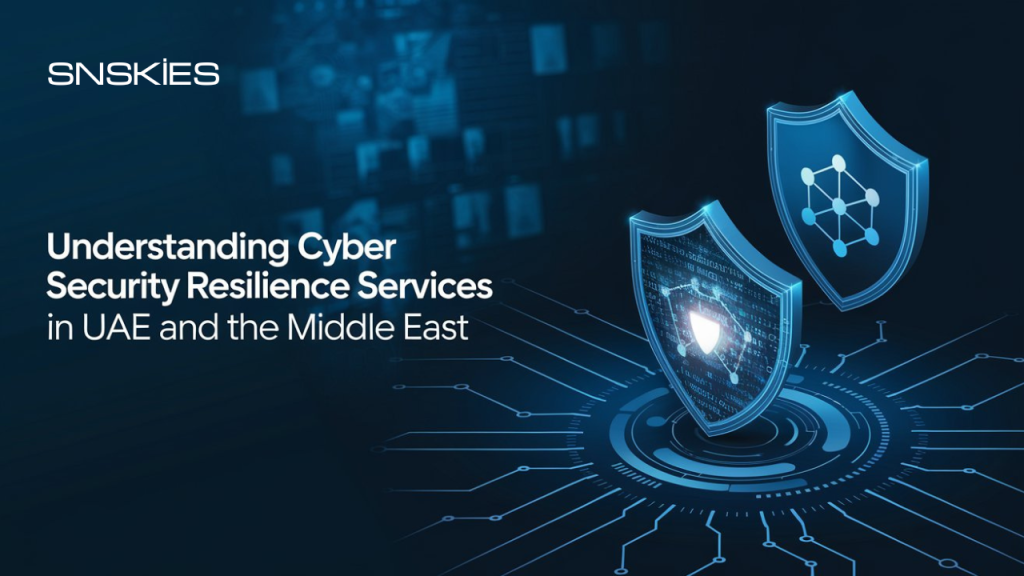
Articles Cyber Security Consulting Services in the UAE | Middle East Articles Cyber Security Consulting Services in the UAE | Middle East Articles January 29, 2025 In the rapidly evolving digital landscape, businesses across the UAE and the Middle East are facing an increasing wave of cyber threats. As more businesses in the region depend on digital platforms and online services, ensuring the resilience of their cyber infrastructure is critical. Cyber security resilience services have become essential for organizations seeking to protect their operations and digital assets from potential risks. These services not only focus on detecting and defending against cyberattacks but also emphasize preparing businesses to recover swiftly and continue operations in the face of any disruptions. For businesses in Dubai and the broader UAE region, where the digital economy is booming, cyber resilience has never been more important. By incorporating advanced tools and strategies, organizations can strengthen their defenses, safeguard sensitive data, and maintain operational continuity even in the event of a cyberattack. What Are Cyber Security Resilience Services? Cyber security resilience services encompass a suite of solutions designed to help businesses develop a proactive cybersecurity strategy. These services are focused on preventing cyber incidents, responding to them swiftly, and ensuring that businesses can recover quickly after an attack. The goal is to create a resilient digital environment where companies are prepared for any potential security threats. For businesses in the UAE, where economic sectors such as finance, healthcare, and government heavily depend on secure digital systems, implementing cyber security resilience services is crucial for operational stability. These services provide advanced protection against a range of threats while improving an organization’s ability to recover quickly from any cybersecurity disruptions. Key Components of Cyber Security Resilience Services The effectiveness of cyber resilience services lies in their ability to combine multiple layers of protection and response mechanisms. Below are the key components typically involved in such services: Security Operations Center (SOC) Advisory Services A Security Operations Center (SOC) is an essential facility for organizations to monitor, detect, and respond to cybersecurity threats. SOC advisory services help businesses set up and manage their own SOC, offering 24/7 monitoring of networks and systems to identify potential threats. By integrating SOC with advanced tools, businesses in the UAE can have a real-time response capability to counteract emerging threats. Incident & Forensics Capability In the unfortunate event of a cyberattack, incident response and forensics are critical components of cyber resilience. Incident response ensures that an attack is contained and mitigated quickly. Forensics, on the other hand, involves investigating the attack to understand its origin, impact, and vulnerabilities exploited. This enables businesses to strengthen their security measures moving forward and prevent similar attacks. Threat Intelligence Services Threat intelligence services are essential for proactive defense. By gathering and analyzing data from various sources, businesses can gain insights into the latest cyber threats targeting their industry. These services allow organizations to stay one step ahead of cybercriminals, equipping them with actionable information to mitigate risks and bolster their security posture. Onsite & Hybrid Security Operations With the increase in remote work and cloud-based systems, hybrid security operations are gaining popularity. Hybrid security solutions combine on-premise and cloud-based systems, offering a more flexible and scalable approach to cybersecurity. Onsite operations ensure local protection, while hybrid solutions allow businesses to secure their cloud environments as well. The Approach to Cyber Defense and Cyber Resilience As cyber threats evolve, businesses in the UAE must adopt a comprehensive approach to build cyber resilience. This involves not only strengthening security measures but also fostering a culture of continuous improvement and adaptation. Below are the essential elements of a robust cyber defense and resilience strategy: Govern & Build Resilience The foundation of cyber resilience begins with governance. This includes establishing clear cybersecurity policies, conducting risk assessments, and defining the roles and responsibilities of various stakeholders within the organization. In the UAE, where compliance with local and international regulations is vital, businesses need to integrate governance practices that align with both legal requirements and best industry practices. Operational Security Insights An effective cyber resilience strategy requires a clear understanding of operational security. By conducting thorough assessments, businesses can identify vulnerabilities and prioritize their cybersecurity investments. Having visibility into an organization’s risk landscape allows businesses to develop targeted strategies that improve defenses and optimize the effectiveness of security measures. Achieving Higher ROI on Security Investments The key to building resilience lies in maximizing the return on cybersecurity investments. This is done by aligning security measures with business objectives, ensuring that resources are allocated effectively to address the most pressing risks. By implementing best practices and leveraging the latest technologies, businesses can achieve a higher ROI on their cybersecurity efforts while improving internal controls. Empowering Businesses in the UAE to Achieve Cyber Resilience As businesses across the UAE continue their digital transformation journeys, the need for advanced cyber security resilience services becomes more critical. With organizations becoming increasingly dependent on technology for their operations, a single cyberattack can have devastating consequences on business continuity, reputation, and revenue. By embracing a resilient approach to cybersecurity, businesses in the UAE can not only protect their data but also enhance trust among customers, clients, and partners. Whether it’s preventing data breaches, avoiding financial losses, or mitigating the reputational damage caused by cyberattacks, cyber security resilience services provide the tools needed for businesses to thrive in an increasingly uncertain digital landscape. Cyber Security Services for Advanced Threat Detection and Risk Mitigation In the ever-evolving world of cybersecurity, businesses in the UAE need solutions that can keep pace with emerging threats. Advanced cyber security resilience services use cutting-edge technologies such as artificial intelligence (AI) and machine learning (ML) to detect threats in real-time and respond proactively. Below are the core services that provide advanced threat detection and risk mitigation: Real-Time Threat Detection Real-time threat detection enables businesses to identify and respond to cyberattacks as they happen. AI-powered cybersecurity tools continuously monitor network traffic and system activities, identifying unusual behavior that